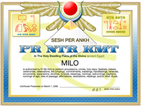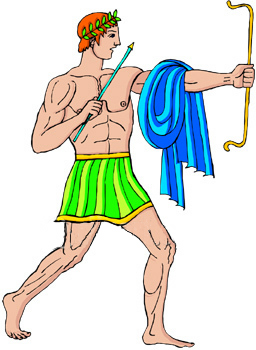
Summary: Apollo (Apollon) is the Greek God of the sun, fertility, healing, music, poetry, prophecy, and oracles. Apollo is one of the 12 Olympians.
- names
- basic information
- relations
- magick
- candle color
- planet
- herbs
- myths
- holy days
- priests/priestesses
- links
names:
Greek name: Apollo, Apollon
Celtic name: Apollo Grannus A Celtic derivation of the Greco-Roman god Apollo)
(NOTE: In addition to native variations by locality or over time, there are often several possible transliterations into the Roman alphabet used for English.)
basic information:
Apollo is the Greek god of the sun and is associated with healing, light, music, and poetry.
Greek God of the sun, fertility, prophecy and oracles, light, healing, music, and poetry.
Apollo’s relations:
Apollo was the twin brother of Artemis (sun and moon).
Son of Zeus and Leto.
One of the Twelve Great Olympians
The Greeks considered Apollo to be the same God as the Kemetic (ancient Egyptian) Horus or Heru Sa Aset.
magickal information and correspondences:
Sacred candle color: gold and white



planet:
Planet: Sun ![]()
herbs associated with Apollo:
myths and beliefs:
Abaris: A priest of Apollo, who, with the help of the God, fled from Scythia to Greece to avoid the plague. Apollo gave Abaris a golden arrow which made the priest invisible, and with which he cured diseases and performed oracles (prophesies and answers to questions).
The Greeks believed that Heru and Apollo were the same God.
holy days
Sunday: Apollo is associated with Sunday.
other:
religious title certificate

Get a beautiful certificate declaring that you are a priestess, priest, high priestess, high priest, witch, or shaman of Apollo. This is a real religious certificate meeting government standards for conducting marriages and other ceremonies.

external links:
If you follow any of the links offered on this web site, no spell begging. Especially no love spell begging.
“lots of artwork (sculpture and paintings)” by Raphael (1511) (OUTSIDE LINK — PICTURES)
 “Parnasus Apollo” by Raphael (1511) (OUTSIDE LINK — PICTURES)
“Parnasus Apollo” by Raphael (1511) (OUTSIDE LINK — PICTURES) “Apollo Belvedere” Vatican Museum, Rome, Italy (OUTSIDE LINK — PICTURE)
“Apollo Belvedere” Vatican Museum, Rome, Italy (OUTSIDE LINK — PICTURE) “Roman statue of Apollo”, 2nd Century C.E. Citadel Museum, Jordan (OUTSIDE LINK — PICTURE)
“Roman statue of Apollo”, 2nd Century C.E. Citadel Museum, Jordan (OUTSIDE LINK — PICTURE)
![]() Pan Painter Apollo and Artemis (c. 490 B.C.) (OUTSIDE LINK — PICTURE NOTE that this link can only be reached from a .edu address, such as a college or university library)
Pan Painter Apollo and Artemis (c. 490 B.C.) (OUTSIDE LINK — PICTURE NOTE that this link can only be reached from a .edu address, such as a college or university library)
If you have an Apollo-related web page, please send the URL to Milo. Please indicate if there is a picture on your web page.
click on picture for larger image
“Parnasus Apollo” by Raphael (1511).
“Apollo Belvedere”. Vatican Museum, Rome, Italy.
Roman statue of Apollo, 2nd Century C.E. Citadel Museum, Jordan
Pan Painter. Apollo and Artemis (c. 490 B.C.) NOTE that this link can only be reached from a .edu address, such as a college or university library













